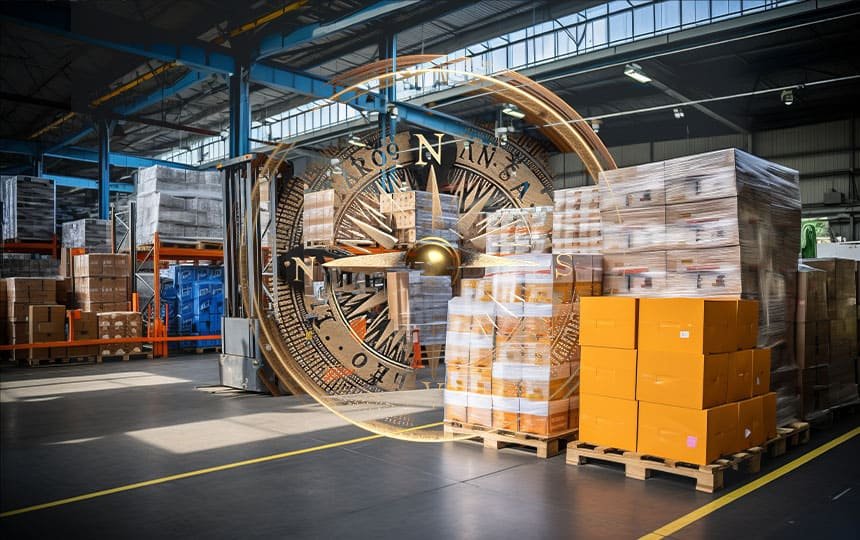
Vaastu for Factory by Vaarun Deva
Optimizing Industrial Spaces for Success In the realm of modern business, the principles of Vaastu Shastra, an ancient Indian architectural science, continue to gain recognition for their ability to improve the efficiency and profitability of industrial spaces.
Optimizing Industrial Spaces for Success
In the realm of modern business, the principles of Vaastu Shastra, an ancient Indian architectural science, continue to gain recognition for their ability to improve the efficiency and profitability of industrial spaces. Vaarun Deva, a highly regarded authority in Vaastu consultancy, highlights the significance of designing factories that align with natural energies, ultimately fostering an environment conducive to productivity and growth.
What is Vaastu Shastra?
Vaastu Shastra encompasses the guidelines for constructing buildings that harmonize with the five elements of nature: earth, water, fire, air, and space. This science emphasizes the understanding of directions, layouts, and spatial arrangements to create environments that promote well-being and success. In the context of factories, applying Vaastu principles can lead to enhanced operational efficiency, reduced wastage, and overall business prosperity.
Key Vaastu Principles for Factory Design
1. Site Selection
Selecting the right site is crucial. According to Vaarun Deva, an ideal factory location should face the North or East. These orientations not only harness the benefits of natural light but also channel positive energies, which can significantly contribute to the factory's growth.
2. Entrance Orientation
The main entrance of the factory must ideally be positioned in the North or East direction. A well-placed entrance attracts prosperity and positive energy, creating an inviting atmosphere for employees, clients, and visitors.
3. Factory Layout
A thoughtfully designed factory layout can enhance workflow and efficiency. Vaarun Deva recommends positioning production units and machinery in the Southern and Western sections of the factory. This placement correlates to stability and strength, allowing for smooth operations and minimized disruptions.
4. Storage Areas
The storage of raw materials and finished products should be designated in the Southwest corner of the factory premises. According to Vaastu principles, this placement helps in retaining wealth and minimizing losses, thus ensuring a profitable operation.
5. Employee Welfare Zones
Creating dedicated spaces for employee welfare, such as break rooms and recreational areas, is vital for maintaining high morale. Vaarun Deva suggests these areas be positioned in the Northeast, promoting relaxation and rejuvenation for employees and fostering a positive work atmosphere.
6. Power Supply and Equipment
Heavy machinery and power supply units should be placed in the Southeast section of the factory. This area is associated with the fire element, contributing to energy efficiency and a balanced operational flow.
7. Landscaping and Environment
The external environment of the factory also plays a significant role in its overall success. Vaarun Deva encourages incorporating greenery around the factory premises, particularly in the West and South. This not only creates a protective barrier against negative energies but also enhances the aesthetic appeal of the workplace.
Benefits of Implementing Vaastu in Factories
Integrating Vaastu principles into factory design can lead to numerous advantages, including:
Increased Productivity: A well-structured layout fosters smooth operations and efficient workflows, resulting in higher productivity levels.
Improved Financial Performance: Harmonious environments attract positive energies, which can lead to increased sales and enhanced financial stability.
Employee Satisfaction: Well-designed spaces that prioritize employee welfare contribute to satisfaction and motivation, reducing turnover and fostering loyalty.
Stress Reduction: Adhering to Vaastu principles minimizes chaos and confusion within the workplace, leading to a more peaceful working atmosphere.
Conclusion
Vaarun Deva’s insights into Vaastu for factories underscore the importance of creating industrial environments that align with natural energies. By adhering to these principles, factory owners can optimize their layouts and enhance their operations, ultimately leading to increased productivity and success. As industries evolve, the timeless wisdom of Vaastu Shastra remains a vital tool for modern business growth, proving that ancient practices can indeed coexist seamlessly with contemporary needs. Embracing Vaastu is not just about adhering to tradition; it’s about strategically positioning oneself for a prosperous future.